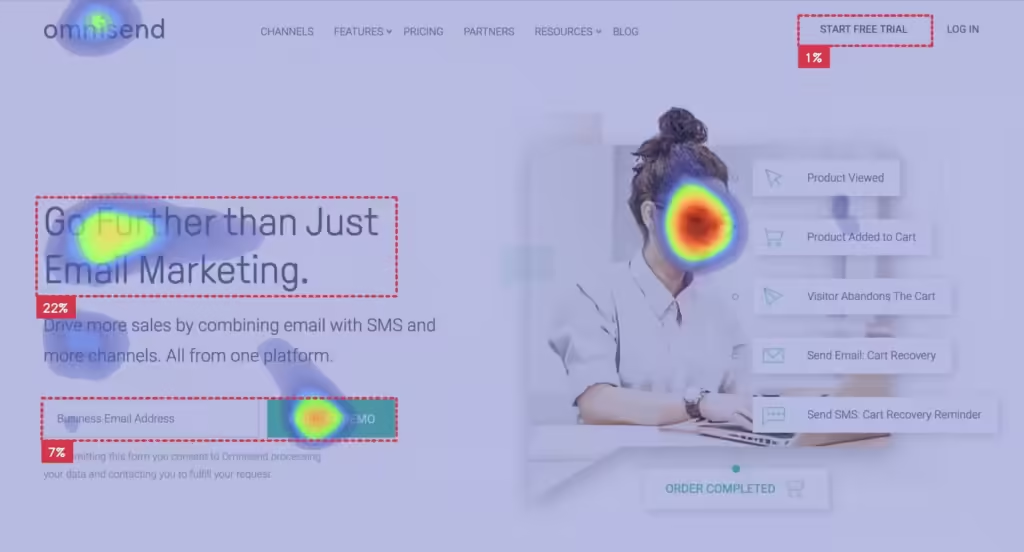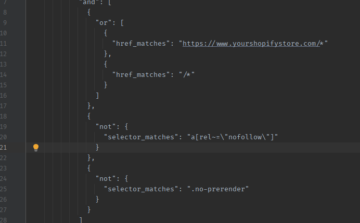Spis treści
In continuous development (and, more broadly, in continuous improvement), user experience (UX) optimisation becomes an essential element of success. Did you know that just a few seconds determine whether a user stays on your site or leaves it? Attention Insights, a tool based on artificial intelligence, can be your best ally in the battle for users’ attention. Through advanced visual analytics, Attention Insight helps you understand which elements of a page attract the most attention, enabling you to optimise UX in ways that were previously impossible. In this article, we will discover how Attention Insight can revolutionise your approach to UX, supporting the continuous improvement of your website.
Introduction to Attention Insights and UX
In today’s digital world, where competition in e-commerce is immense, optimizing user experience (UX) becomes a key element of success. Attention Insights is an AI-based tool that offers advanced visual analyses, helping to understand how users engage with content on websites. In this article, we will explore how Attention Insights can support UX optimization and the benefits and challenges it brings, in the context of continuous improvement and continuous development.

How Attention Insights can support UX optimization
Attention Insights offers many possibilities in the context of UX optimization, which are integral to the process of continuous improvement and continuous development. Here are some key areas where Attention Insights can be particularly useful:
- User Attention Analysis: Attention Insights allows for the analysis of which elements on the site attract the most user attention, crucial for optimizing layout and content.
- Heatmaps: The tool generates heatmaps that visualize where users focus their attention, enabling the identification of the most engaging parts of the site.
- A/B Testing: Attention Insights can support A/B testing of different site versions, helping to understand which elements are more effective in attracting user attention.
- User Journey Optimization: Visual analysis helps better understand how users navigate the site, crucial for optimizing user journeys and continuous improvement in UX and continuous development.
Examples of using Attention Insights in online stores and websites
Attention Insights finds broad applications in various aspects of UX, supporting continuous improvement and continuous development. Here are some practical examples:
- Product Page Optimization: User attention analysis allows for better placement of key information and CTA (Call to Action) buttons on product pages, which can increase conversions.
- Improving Navigation: Heatmaps can indicate which navigation elements are most visible and used by users, allowing for menu and link optimization.
- Better Content Presentation: Attention Insights helps understand which parts of the content attract the most attention, allowing for better placement of texts, images, and videos.
- Testing Layouts: The tool supports testing different site layouts, helping to identify the most effective solutions, crucial for continuous improvement of the user interface and continuous development.

Benefits of using Attention Insights in UX optimization
Using Attention Insights in UX optimization brings many benefits, integral to the process of continuous improvement and continuous development:
- Increased Conversions: Better placement of key site elements can significantly increase conversion rates, supporting continuous improvement of sales results.
- Improved User Satisfaction: Optimizing site layout and content improves user experience, crucial for continuous improvement of customer relationships.
- Operational Efficiency: Automating visual analysis saves time and resources, supporting continuous improvement of operational efficiency.
- Better Understanding of Users: Attention Insights allows for deeper analysis of user behavior, enabling better tailoring of the offer to their needs, supporting continuous improvement of UX strategies and continuous development.
Impact of UX optimization on SEO
UX optimization also has a significant impact on SEO (Search Engine Optimization). Good user experiences can lead to better search engine rankings, crucial for site visibility. Here are some aspects where UX optimization affects SEO:
- Time on Site: Sites that are easy to navigate and engaging keep users longer, positively evaluated by search engine algorithms.
- Bounce Rate: A lower bounce rate indicates that users find what they are looking for on the site, which can improve the site’s position in search results.
- Responsiveness: Sites optimized for UX are usually responsive, crucial for SEO, especially with the growing number of mobile users.
- Page Load Speed: UX optimization often involves improving page load speed, one of the ranking factors in SEO.

Challenges and limitations of Attention Insights in UX
Despite its numerous benefits, Attention Insight also faces some challenges in UX optimisation. Among these, the complexity of interpreting the data is a rather important limitation. Implementing and interpreting the results of visual analytics can be complex and require specialised knowledge, which can limit optimisation opportunities for companies that do not have adequate UX expertise within their organisational structure. If you are in need of support with AI analytics and data interpretation, we encourage you to contact us.
Summary and recommendations
Using Attention Insights in UX optimization for online stores and websites is not just a trend but a real necessity in today’s competitive e-commerce world. Attention Insights offers tools that can significantly improve user experiences, increase conversions, and operational efficiency, supporting continuous improvement and continuous development. However, to fully leverage the potential of Attention Insights, companies must be aware of the challenges and limitations associated with this technology. We recommend that companies invest in visual analysis development and experiment with different solutions to find those that best meet their needs and support continuous improvement and continuous development.






